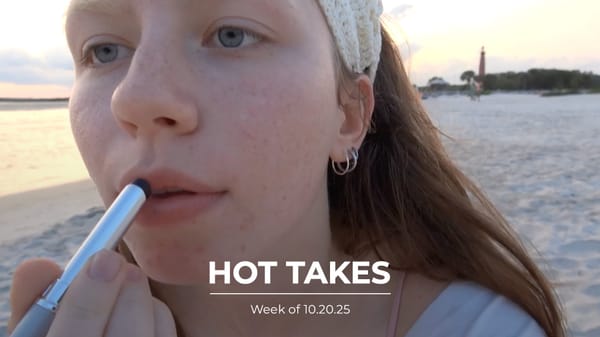Review | U2 @ Lincoln Financial Field

For the 30th anniversary of The Joshua Tree, U2 has taken the common voices (poets, crusading women, heroin addicts and economic down-turned masses) of America and blended them into celebration. While the evening’s expectation of playing the iconic album straight through certainly sold tickets, it was as Bono reminded Americans of the idea of America that the night grew grand.
Surrounded by the expanses of Philadelphia’s Lincoln Financial Field, U2’s set opened with Larry Mullen, Jr. descending down a ramp to a Joshua tree-shaped thrust stage where his drum kit stood waiting. Mullen’s emphatic double high-hat confirmed that this would indeed become “Sunday, Bloody Sunday.” The Edge, picking his Fender Strat took side left, Bono soon joining with unbelief at the news of more violence, then Adam Clayton jutted forward as his bass finished the introduction. No pyrotechnics, no strobe lights, not even a close-up projected on video screens. Simply, four bandmates in the middle of a howling wind of adoration.

A U2 concert seems an odd place for simplicity. Especially in a sold-out stadium where all eyes are drawn to an undulated screen, an enormous display of over 1000 video panels combined for hyperHD resolution, and framed by a 40-foot-tall spiny yucca plant, that great symbol of desert hope from U2’s fifth album The Joshua Tree. But for the initial songs, attention was focused on U2. Nothing more than the songs, nothing more needed.
That message was evident as the Lumineers finished their opener set with “Stubborn Love” and a humid glow formed over the west-facing stand. Suddenly, the gigantic screen, previously dormant and taking up the full width of the stadium, blazed alive. Against a black background, white words scanned heavenward. Lines of poetry, meters in height, voiced Pedro Pietri’s “Puerto Rican Obituary” (All died/hating the grocery stores that sold them make-believe steak/ and bullet-proof rice and beans) and “Preliminary Sketches: Philadelphia” by Elizabeth Alexander (I’m listening for the Philly sound— Brother brother brotherly love).
Few people were completely still; not many sacrificed conversation or bathroom exits for these verses. Yet, amidst the clatter of stadium seats and calls for cold beer, these distinctively American words spoke clear. Before the night became what Whitman described as, “the party of young fellows, robust, friendly, /Singing with open mouths their strong melodious songs” Bono, The Edge, Adam, and Larry presented the varied carols of shoemaker, boatman, and mother. These, too, are the songs of America- the songs of The Joshua Tree.
This is a simple idea, that like America, an audience can become over-enraptured by “Where the Streets Have No Name” or sit complacently since our politics are vetted by “Bullet the Blue Sky.” We forget our baser poets; we forget “Trip Through Your Wires.”

Perhaps this is why U2 started back at the apocalyptic early days: sectarian violence on “Sunday Bloody Sunday,” a nuclear winter for “New Year’s Day,” opioid despair within “Bad,” and “Pride” where our heroes become martyrs. From this void, this literal darkness, the video wall burst forth with light. Murky organ chords incanted 30 years of music enjoyment, travel footage of a black and white California desert road dotted with unknown figures substituted for Bono’s victory lap, and The Joshua Tree began.
The challenge of running through all of an album that boasts a Side A (hit after hit) and Side B (skip after skip), is how the relatively unfamiliar songs play three decades later. Two ideas worked magic for the final tracks: Complete restructuring as on “Red Hill Mining Town” with a projected Salvation Army horn section. The pacing slowed, and Adam took a seat on the drum riser with a huge grin; Return to basics as the final notes of “Mothers Of the Disappeared” awakened ghostly images of families who held candles for their murdered children.

Both strategies worked well, proving useful for the post-intermission transition into recent material. With an updating of Miss Sarajevo as Miss Syria, Omaima Hoshan, a teenager who is campaigning against child marriage, provided a tour of her war-torn home. Yet, rubble and gray desolation gave way to bold colors, hope prevailing. A massive banner of Omaima’s passport photo unfurled over the crowd, surfing her image across each section, physically connecting Philadelphia with worldwide concerns. The voices of America reach far, inspiring a band from Ireland and refugees from Syria.
Bono emphasized this point, delivering a stern jeremiad against budget cuts proposed by President Trump. Numbers of humans, “18 million. People, not statistics,” who have been spared the ravages of AIDS in sub-Saharan Africa. Bono called this the story not told, how American lawmakers followed the lead of then-President Bush to approve funding for AIDS treatment. Audience and lawmakers needed to be as “One,” uniting to campaign against poverty.

A similar message greeted “Mysterious Ways,” the belly dancers replaced with HERstory images of women who battled for human rights. Like epic trading cards of feminism, each woman from Aphra Behn to Michelle Obama was gloriously displayed. And while these thematic threads are found on every U2 tour, the simple reminder to listen for prophetic voices was tightly constructed and artistically rich.
Most concert goers know what to expect with U2; we’ve been outside with their chandelier trabants (Zoo TV) and lemon rocketship (Pop Mart), or inside bombarded with operatic multimedia (Vertigo) and a caged walkway for biographical reflection (iNNOCENCE + eXPERIENCE). What was unexpected was how good this band can be when they no longer feel the need for running just to stand still.
Even as The Joshua Tree was a milestone for U2, boasting radio friendly anthems and propelling the band across America, this tour marks how U2 has rediscovered a sparseness within the grandeur of spectacle and nostalgia. This is far beyond the usual tricks of an intimate b-stage or acoustic renditions. It is a reimagining of how four spotlights and the truth can deliver a stadium-worthy experience for a zealous audience. And for the band itself.




